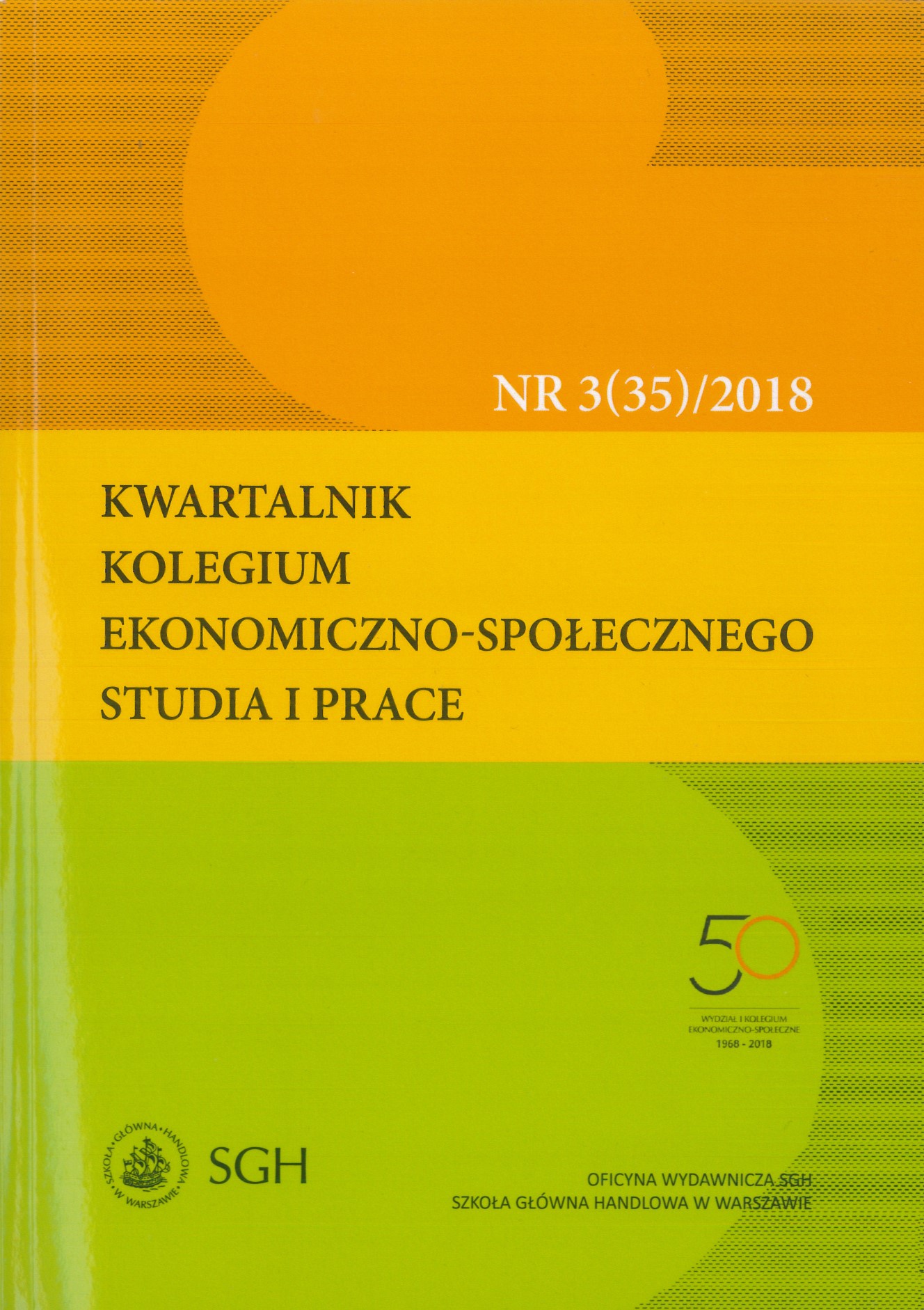Poland’s place in international trade: The importance of the European Unioncommon trade policy
Main Article Content
Abstract
The aim of the article is to present Poland’s position in international trade and the importance of the solutions applied in the common EU trade policy in increasing the role of Polish trade in international commercial exchange. The article discusses the factors determining the turnover of Poland’s international trade: a change in the global economy, growing protectionism of some countries, competitiveness of the Polish economy, an increase in the number of new free trade agreements concluded by the European Union, and thus by Poland, as one of the Member States. The article presents the findings of qualitative and quantitative analyses. The future of Polish trade will be conditioned by the pursuit of liberalization of the European Union’s foreign trade, the exit of the United Kingdom from the EU structures, individual labour inputs and the competitiveness of Polish foreign trade.
Downloads
Article Details
Autor (Autorzy) artykułu oświadcza, że przesłane opracowanie nie narusza praw autorskich osób trzecich. Wyraża zgodę na poddanie artykułu procedurze recenzji oraz dokonanie zmian redakcyjnych. Przenosi nieodpłatnie na Oficynę Wydawniczą SGH autorskie prawa majątkowe do utworu na polach eksploatacji wymienionych w art. 50 Ustawy z dnia 4 lutego 1994 r. o prawie autorskim i prawach pokrewnych – pod warunkiem, że praca została zaakceptowana do publikacji i opublikowana.
Oficyna Wydawnicza SGH posiada autorskie prawa majątkowe do wszystkich treści czasopisma. Zamieszczenie tekstu artykuły w repozytorium, na stronie domowej autora lub na innej stronie jest dozwolone o ile nie wiąże się z pozyskiwaniem korzyści majątkowych, a tekst wyposażony będzie w informacje źródłowe (w tym również tytuł, rok, numer i adres internetowy czasopisma).
Osoby zainteresowane komercyjnym wykorzystaniem zawartości czasopisma proszone są o kontakt z Redakcją.
References
2. Bogdan W. et al., Poland 2025: Europe’s new growth engine, McKinsey & Comp., Warszawa, January 2015.
3. Bureau J.-C. et al., Risks and opportunities for the EU agri-food sector in a possible EU–US trade agreement, “Study for the European Parliament’s Committee on Agriculture and Rural Development” 2014, IP/B/AGRI/IC/2013–129.
4. Carlson M. et al., Should Poland Join the Euro? An Economic and Political Analysis, Graduate Policy Workshop, Woodrow Wilson School of Public and International Affairs, Princeton University, February 2016.
5. Caselli F., What effect does trade openness have on GDP? World Economic Forum, https://www.weforum.org/agenda/2015/10/what-effect-does-trade-openness-haveon-gdp
6. Cieślik A., Michałek J. J., Innovation Forms and Firm Export Performance: Empirical Evidence from ECA Countries, “Entrepreneurial Business and Economics Review” 5 (2), 2017, pp. 85–99.
7. Cieślik A., Michałek J. J., Szczygielski K., Innovations and Export Performance: Firmlevel Evidence from Poland, “Entrepreneurial Business and Economics Review” 4 (4), 2016, pp. 11–28, http://dx.doi.org/10.15678/EBER.2016.040402
8. EEAG Report on the European Economy. The European Economic Advisory Group, What now, With Whom, Where To – The future of the EU, CESifo Group, Munich 2018.
9. El-Agraa A., The European Union. Economics and Policies, 9thed., Cambridge University Press, Cambridge 2011.
10. Felbermayr G. et al., Macroeconomic potentials of Transatlantic Free Trade: A high resolution perspective for Europe and the world, “CESifo Working Paper” 5019, Munich 2014.
11. Główny Urząd Statystyczny, Mały Rocznik Statystyczny 2001 (Central Statistical Office. The Concise Statistical Yearbook 2001), Warszawa 2001.
12. Główny Urząd Statystyczny, Rocznik Handlu Zagranicznego 2007 (Central Statistical Office. Yearbook of Foreign Trade Statistics of Poland 2007), Warszawa 2007.
13. Główny Urząd Statystyczny, Rocznik Handlu Zagranicznego 2017 (Central Statistical Office. Yearbook of Foreign Trade Statistics of Poland 2017), Warszawa 2017.
14. Główny Urząd Statystyczny, Rocznik Statystyczny Handlu Zagranicznego 2008, Roczniki Branżowe (Central Statistical Office. Yearbook of Foreign Trade Statistics of Poland 2008, Series of Yearbooks on Trade), Warszawa 2008.
15. Główny Urząd Statystyczny, Rocznik Statystyczny Handlu Zagranicznego 2009, Roczniki Branżowe (Central Statistical Office. Yearbook of Foreign Trade Statistics of Poland 2009, Series of Yearbooks on Trade), Warszawa 2009.
16. Hagemejer J., Liberalization of Trade Flows under TTIP From A Small Country Perspective. The Case of Poland, University of Warsaw, Faculty of Economic Sciences, “Working Papers” No. 17 (165), 2015.
17. International Monetary Fund, Republic of Poland, Washington D. C. 2017, “IMF Country Report” No. 17/220.
18. Kelm R., Eksport, import i kurs złotego: 2000−2014, “Bank i Kredyt” 47 (6), 2016, pp. 585–620.
19. Krugman P., Obstfeld M., Melitz M. J., International Economics. Theory and Policy, Pearson Education, Boston–Edinburgh 2018.
20. Lemoine F., Trade Policy and Trade Patterns During Transition: A Comparison Between China and the CEECs, CEPII, Document de travail Paris 1996, No. 96–02.
21. Melitz M. J., Redding S. J., Heterogeneous Firms and Trade, [in:] Handbook of International Economics, E. Helpman, K. Rogoff, G. Gopinath, (Eds.), Vol. 4, Elsevier, Amsterdam 2014, pp. 1–54.
22. Myant M., O’Brien R., The TTIP’s impact: bringing in the missing issue, European Trade Union Institute, “Working Paper” 2015.01, Brussels 2015.
